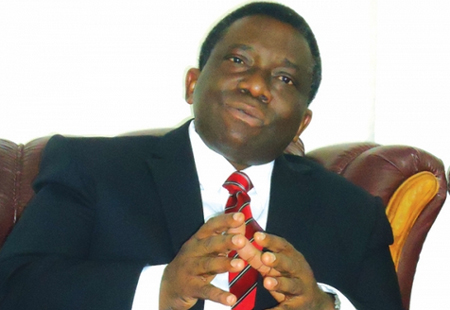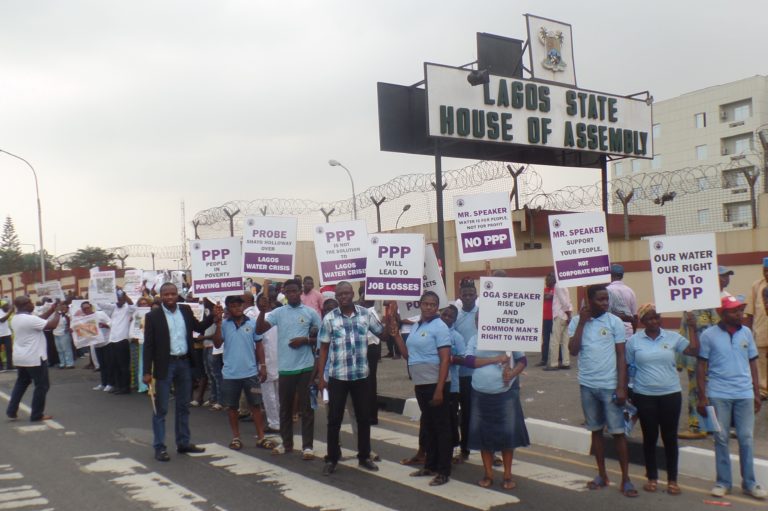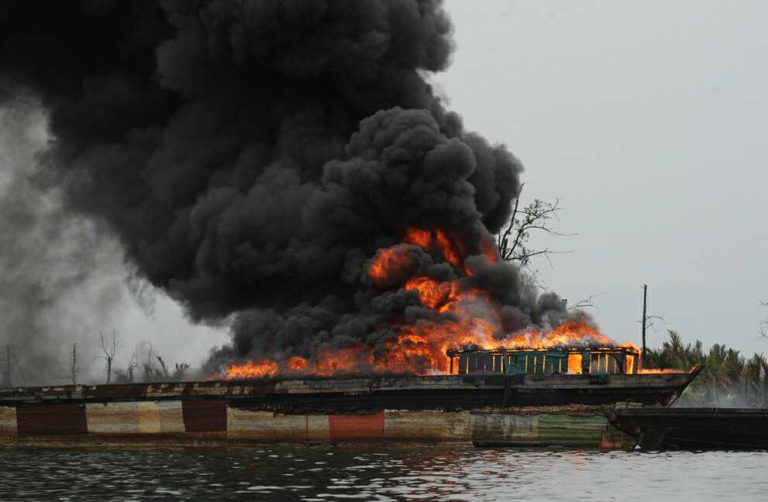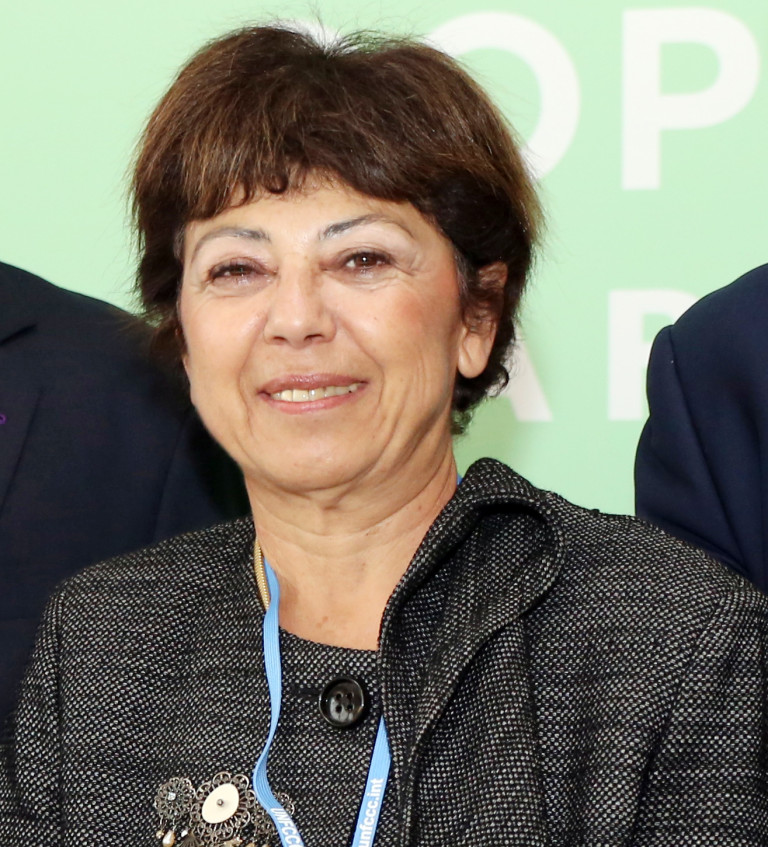The proposed 2017 Federal Ministry of Health budget of 4.17 percent has been said to be a poor improvement from the 2016 budget , which was 4.13 percent.
Correspondent Ruth king brings details in this report and the the endless complaints about the poor funding of the health sector.
Radio Report: 2017 Federal Ministry of Health budget unimpressive
Radio Report: Preeclampsia, major cause of maternal mortality, morbidity
Preeclampsia is one of the major causes of maternal mortality and morbidity, preterm birth and perinatal death in a developing country like Nigeria.
Correspondent Ruth King brings details in this report.
[soundcloud url=”https://api.soundcloud.com/tracks/306424021″ params=”auto_play=false&hide_related=false&show_comments=true&show_user=true&show_reposts=false&visual=true” width=”100%” height=”450″ iframe=”true” /]
Proposed Lagos Environment Law is pro-privatisation, anti-people – ERA/FoEN
The Environmental Rights Action/Friends of the Earth Nigeria (ERA/FoEN) has described the proposed Bill to Provide for the Management, Protection and Sustainable Development of the Environment in Lagos State as a document laden with ambiguities to mask its privatisation plans in the water sector.
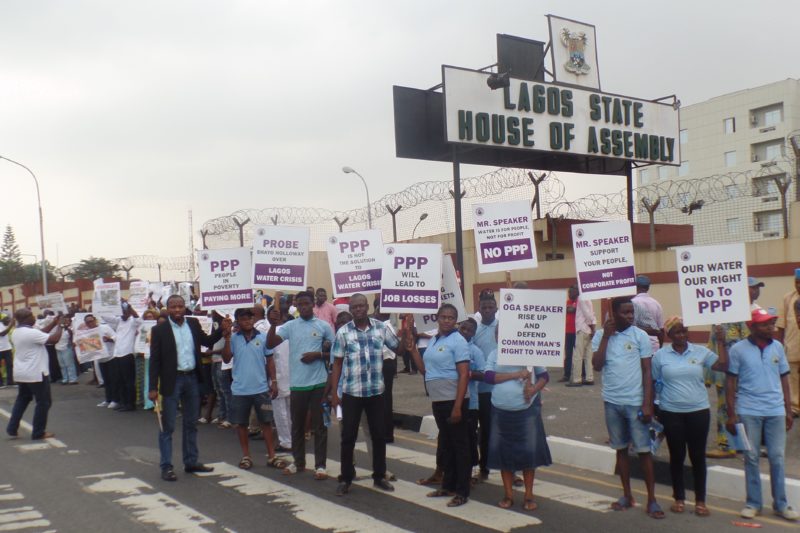
At a Public Hearing organised by the Lagos House Committee for Environment at the House of Assembly Complex in Alausa, Ikeja on Thursday, February 9 2017, ERA/FoEN faulted sections of the proposal which it viewed as attempts to sneak public private partnership (PPP) into the water sector. The sections include: Allocation of Fund and Guarantees, Sinking of Borehole Hydraulic and other Structures, Maintenance of Water Bodies, Functions of the Office and Powers to Make Regulations.
Deputy Executive Director of ERA/FoEN, Akinbode Oluwafemi, said: “We are shell-shocked at the the proposed law as it is fraught with deliberate loopholes that will open the door for the corporate take-over of Lagos water, the sanitation sector and, ultimately, the state.”
Oluwafemi explained that, under Allocation of the Fund and Guarantees that provides that the state government will secure payment in respect of contracted services and concessions for long term infrastructure investments with an Irrevocable Service Payment Order as the first line charge on the Internally Generated Revenue is scandalous. Literally, the Lagos government is saying it must pay these corporate entities before spending on roads, schools, hospitals, water, etc.
“This is absurd,” he remarked, added that the provision also stated that, “In the event that the State’s IGR is insufficient or unavailable to discharge its obligations, it will apply monies due to it from the monthly allocations from the federal account to secure its payment obligation to the contractors and concessionaires”.
The ERA/FoEN memorandum also carpets the clause that states that members of The Trust Fund Board to be set up will have six members, two of which will be from the Ministry of Environment, and the Commissioner for Environment being its chair. It noted that the Commissioner will have too many powers under the law as he will also be tasked with making regulations.
In the provision that criminalises Sinking of Borehole Hydraulic and other Structures and recommends prison terms and fines for defaulters, the group was of the view that Lagos residents currently using these means to access water are only victims of a system that failed to provide them a basic human right.
“What logic justifies banning people from using streams or helping their neighbours who cannot access safe water due to inadequate investment from the state government for decades? Yet, this obnoxious provision is in the law.”
The ERA/ FoEN boss explained that if it goes unchallenged, these measures would further burden Lagos citizens at a time that the government has no clear and articulated plan to fix the public water system, adding: “Our fear is that this pressure on Lagos citizens could be the guise to introduce the PPP in the water sector which Lagosians have roundly condemned.
In addition to the memorandum submitted, ERA/FoEN also provided them with copies of the document – “Lagos Water Crisis: Alternative Roadmap for the Water Sector” which it launched last October as solution to the water crisis in Lagos.
Radio Report: Impact of radio stations’ upsurge on governance
Concern as Antarctic ice shelf crack grows rapidly
A rapidly advancing crack in Antarctica’s fourth-largest ice shelf has scientists concerned that it is getting close to a full break. The rift has accelerated this year in an area already vulnerable to warming temperatures. Since December, the crack has grown by the length of about five football fields each day.
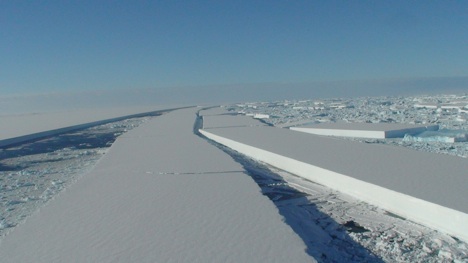
The crack in Larsen C now reaches over 100 miles in length, and some parts of it are as wide as two miles. The tip of the rift is currently only about 20 miles from reaching the other end of the ice shelf. Larsen C is the fourth largest ice shelf in Antarctica, with an area of about 50,000 km2 (19,000 sq mi).
Once the crack reaches all the way across the ice shelf, the break will create one of the largest icebergs ever recorded, according to Project Midas, a research team that has been monitoring the rift since 2014. Because of the amount of stress the crack is placing on the remaining 20 miles of the shelf, the team expects the break soon.
“The iceberg is likely to break free within the next few months,” said Adrian J. Luckman of Swansea University in Wales, who is a lead researcher for Project Midas. “The rift tip has moved from one region of likely softer ice to another, which explains its step-wise progress.”
Ice shelves, which form through runoff from glaciers, float in water and provide structural support to the glaciers that rest on land. When an ice shelf collapses, the glaciers behind it can accelerate toward the ocean. Higher temperatures in the region are also helping to further the ice shelf’s retreat.
If the ice shelf breaks at the crack, Larsen C will be at its smallest size ever recorded.
That would also leave the ice front much closer to the ice shelf’s compressive arch, a line that scientists say is critical for structural support. If the front retreats past that line, scientists say, the northernmost part of the shelf could collapse within months. It could also significantly change the landscape of the Antarctic peninsula.
“At that point in time, the glaciers will react,” said Eric J. Rignot, a glaciologist, professor at University of California Irvine and a senior scientist at the NASA Jet Propulsion Laboratory. “If the ice shelf breaks apart, it will remove a buttressing force on the glaciers that flow into it. The glaciers will feel less resistance to flow, effectively removing a cork in front of them.”
The crack reaches all the way to the bottom of the ice shelf. The crack in Larsen C is a third of a mile deep, down to the floor of the ice shelf.
Scientists fear that two crucial anchor points will be lost as the shelf retreats. According to Dr. Rignot, the stability of the whole ice shelf is threatened.
“You have these two anchors on the side of Larsen C that play a critical role in holding the ice shelf where it is,” he said. “If the shelf is getting thinner, it will be more breakable and it will lose contact with the ice rises.”
Ice rises are islands that are overriden by the ice shelf, allowing them to shoulder more support of the shelf. Scientists have yet to determine the extent of thinning around the Bawden and Gipps ice rises, though Dr. Rignot noted that the Bawden ice rise was a much more vulnerable anchor.
“We’re not even sure how it’s hanging on there,” he said. “But if you take away Bawden, the whole shelf will feel it.”
The collapse of the Larsen C ice shelf may not sharply affect global sea level rise, but the collapse of other vulnerable ice shelves will, say scientists.
The Larsen A and B ice shelves disintegrated in 1995 and 2002, though both were drastically smaller than Larsen C. Neither contributed significantly to global sea level rise, however, because they were already floating above water, and the glaciers behind them did not contain a substantial volume of ice.
According to Dr. Rignot, the collapse of Larsen C would add only a tiny amount of water to the global sea level. Of greater concern to scientists is how the collapse of ice shelves can affect the glaciers that flow behind them, because the melting of those glaciers can cause much higher levels of ocean rise. Scientists see the impending Larsen C collapse as a warning that much larger amounts of ice in West Antarctica could be vulnerable.
By Jugal K. Patel (The New York Times)
As soot blankets Port Harcourt
The air in parts of Port Harcourt, the Rivers State capital city, has been darkened by soot over the past few months, raising a cloud of concerns about the attendant health impacts. Citizens in parts of Port Harcourt are getting worried about the air they breathe. To put it another way, many citizens are afraid to breathe. And that can be deadly.
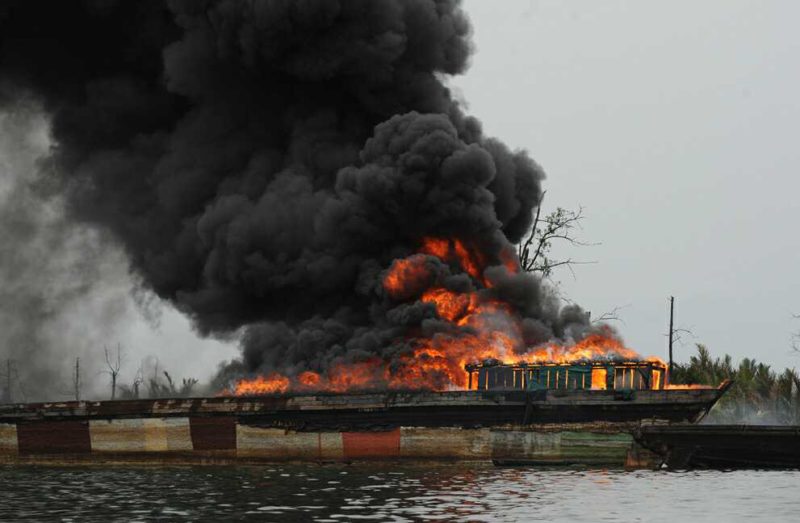
Soot is a general term that covers pollutants derived from incomplete or inefficient burning of fossil fuels or biomass (plants or plant-based materials used as source of energy). The major sources of soot include fuels like diesel used in transport and in electricity generators. For the Niger Delta, the sources include the aforementioned and include others such as: gas flares, illegal refineries, the burning of illegal refineries and crude oil, burning of oil spills by incompetent contractors and the burning of sundry wastes. Bush burning can also be a source of soot in our environment.
The burning of illegal or bush refineries, by the Join Military Task Force (JTF), the incendiary acts that have been raised as banners of victory over oil theft, is one source that must be halted immediately. The bush refineries are basic and flimsy contraptions that can easily be dismantled and safely disposed of. The same goes for wooden barges arrested with stolen crude. Dropping grenades on those toxic wares and sending smoke signals above the creeks may be seen as acts of bravado, but they have serious health impacts on the environment and citizens in the area.
The JTF, working with the Nigerian National Petroleum Corporation (NNPC) and the oil majors, should set up recovery centres where recovered stolen crude are logged, stored and safely disposed of by the original owners or as agreed. The disposal methods could include sending such crude to the refineries or by exporting them if the quality is not compromised by the process of rough handling.
A variety of soot is one called black carbon. We have also heard of black snow arising from carbon particulates that accumulated in the Himalayas, for instance, and is said to aid the rapid melting of snow by reason of the heat they trap. Dramatic carbon pollution in the winter of 1952 led to the death of about 4,000 persons within five days.
The current situation of soot blanketing the skyline of parts of Port Harcourt is deeply troubling and requires urgent actions from relevant government agencies as well as research institutes. In particular, the National Environmental Standards and Regulations Enforcement Agency (NESREA), Nigerian National Oil Spill Detection and Response Agency (NOSDRA), Directorate of Petroleum Resources (DPR) and, in general, the Federal and State Ministries of Environment and those of Health should step up to tackle the emergency situation.
When reports of gathering soot came up a couple of months ago, sources at NESREA confirmed that the soot originated from hydrocarbon or oil-sector related sources. That conclusion rules out bush burning as a possible source. For those that have noticed the thick black smoke belching continuously from the Port Harcourt refineries, those sources are very strong suspects. And then, the bush refineries and the bombing of those rickety refineries by the JTF remain strong contenders. These should all be investigated. The scenario has raised the urgent need for air quality measurement and control in Nigeria. Within accurate measurement of levels of exposure, causal links may not solid and culprits may wriggle out and avoid accountability and responsibility.
It is the duty of our regulatory agencies to pin-point the source of this menace, enforce a cessation of the obnoxious acts and penalise the culprits. We know that the conflicting boundary lines governing the duties of these agencies may complicate the processes for addressing this issue, but joint meetings should overcome territorial defences in the face of the risks our people are exposed to.
This is a serious situation and government cannot afford to remain silent on it. The health impacts of soot and black carbon are well documented and are known to include effects on our respiratory system and bloodstreams. They can trigger cardiovascular diseases such as asthma, chronic cough, sinusitis, bronchitis and colds. The fine particles can also have carcinogenic effects. They can also negatively affect the development of the lungs in children. Life expectancy in the Niger Delta is already precariously low; the effect of soot and black carbon will push those low figures through the bottom.
We should also mention here that Ekpan community at Warri, Delta State, has been suffering extensive pollutions from black carbon emanating from the petrochemical plant located there. The community is more or less heavily coated with soot continually and residents often have to keep their windows shut in futile to keep out the deadly stuff. When the community petitioned the National Assembly over the situation, an order was issued that the plant should be shut down until it was adequately serviced and fitted with devices that would halt the noxious emissions. It does not appear that the order was adhered to as the community is still reeling under the weight of black carbon whenever the machines come alive.
Residents of Port Harcourt, Ekpan and the Niger Delta as a whole deserve a breath of air that is fresh and devoid of soot and black carbon.
By Nnimmo Bassey (Director, Health of Mother Earth Foundation – HOMEF)
Where and why land conflicts occur in Africa, by study
Sixty-three percent of disputes related to private sector land and natural resource investments in Africa began when communities were forced to leave their lands, according to new research released in Dakar, Senagal on Thursday, February 9, 2017 by TMP Systems and the Rights and Resources Initiative (RRI).
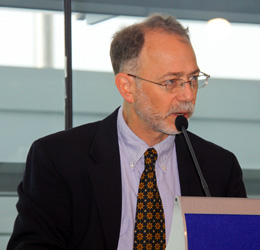
“African governments are competing for investment to spur economic development and improve living standards,” said TMP Systems CEO, Lou Munden. “But most countries need to radically improve the governance of tenure rights to create an attractive and stable investment environment. Companies and investors – who increasingly understand that unclear tenure rights create financial and reputational risks – need to do more to identify and respond to these implicit challenges in emerging market investments.”
The research also found that areas targeted for development in Africa are more heavily populated than similar developments elsewhere in the world. The population density within a 50-kilometre radius of disputed projects in Africa was more than twice the global average: 816,547 people compared with 319,426 globally. For West Africa, the average was over one million people.
“The mistaken belief that Africa is a continent of empty, freely available land open for development has done so much harm,” said RRI Coordinator, Andy White. “No land is unclaimed, and uprooting communities without their consent from their lands and traditional livelihoods creates conflicts and social unrest. Recognising and securing local peoples’ property rights instead provide security for governments, investors and companies – a critical need, given all the political uncertainty in the world today.”
According to the research, the typical tenure-related dispute in Africa occurs:
- An average of 61 kilometres from national borders, far from the seat of centralised government;
- In an area with endemic poverty, low access to government services and poor nutrition;
- In an area that is less developed with little prior change in how the land was used; and
- In an area with a history of social conflict.
“The fact that disputes were just 61 kilometres from national borders on average was surprising and, in our view, very revealing,” added Munden. “It suggests that tenure dispute is much more likely in areas with low legal accountability and economic development. The point is that investors can be exposed to serious risk in these areas because local people will ensure their interests are heard.”
The suite of reports explores investment-based conflicts in East, West and Southern Africa, and compares them to similar conflicts around the world. They were released at a panel event in Dakar alongside RRI’s Annual Review of the global state of land and resource rights, which found that development finance institutions have emerged as potential leaders in the land rights arena given their significant leverage over investments in the developing world.
While a number of high profile corporations have also pledged to both prevent deforestation and respect human rights, implementation of these commitments is slow at best, given complex supply chains and local suppliers whose reputations are less exposed. Despite the growing number of economic actors that accept the market rationale for respecting community land tenure, rights violations are still commonplace.
“Corporations can prevent conflicts that are costly to investors and devastating for local peoples by working with local communities to secure their property rights,” said RRI Coordinator, Andy White. “But not everyone at the table embraces this approach or applies it effectively.”
Palm Oil and West Africa
In West Africa, plantation agriculture – especially palm oil projects – drive a majority of disputes. Community displacement was the primary driver of 70 percent of the tenure disputes examined, while issues related to compensation were the primary driver for 30 percent. Sixty percent of the tenure disputes resulted in work stoppages, which impact companies’ and investors’ profits, and 30 percent resulted in violence.
Munden noted that the Fanaye biofuel plantation project on Senegal’s northwest border was implemented without the consent of local communities. In one case, violent protests in Fanaye Dieri led to the death of two community members and compelled the government to revoke the concession and move it 30 kilometres to the east, to the Ndiael Nature Reserve. But the new location cut off local cattle farmers from their grazing lands, triggering additional conflict. After six years, the concession currently uses only 1,500 hectares out of the 20,000 allocated by the government.
“Because of our soil, many investors are interested in coming to our country,” said Alioune Guèye, President of the Federation of Peasant Landowners, in Senegal. “But some of our most impoverished communities also live on that soil and rely on it for their survival. Too often, companies feel they can cut a deal with the government, raze the land, and create vast plantations while the locals are simply pushed out of the way. Without their land, these communities will have nothing. Their rights must be respected.”
Infrastructure and East Africa
Infrastructure and public utilities are driving a majority of the disputes in East Africa, and communities have made use of stronger legal frameworks to bring lawsuits against companies that violate their rights. Community displacement was the primary driver of 36 percent of the tenure disputes examined, while compensation was the primary driver for 27 percent. Seventy-three percent of the tenure disputes resulted in work stoppages, yet only 27 percent resulted in violence.
While wind power has been embraced by many in Kenya as a clean source of energy for its growing economy, conflict over land and resource rights has delayed or derailed a number of wind power generation projects. Three projects are at the heart of this storm of disputes:
- A wind farm in Kinangop was cancelled after a protracted legal battle and a massive protest that destroyed a wind mast. The developers are now suing the Kenyan government, seeking compensation for their losses.
- A flagship project at Lake Turkana has been delayed for a decade due to an ongoing legal challenge from nomadic pastoral communities. Four communities are seeking redress because their lands were taken without consent.
- In Kajiado County, landowners are mounting legal opposition to the Kipeto project whose buffer zone – half a kilometre wide – included much of their lands.
“The lack of detailed consultation and informed consent contribute to conflicts that increase the cost of doing business in Kenya, and investors are starting to look to other countries for new projects,” Mali Ole Kaunga, director of Indigenous Movement for Peace Advancement and Conflict Transformation (IMPACT), noted. “Disputes that end in violence even one-quarter of the time are still too violent for everyone involved – the communities, investors, companies and governments.”
Sugar and Southern Africa
In Southern Africa, sugar plantations and mining developments are driving a majority of the disputes and, without strong legal frameworks for communities to assert their rights, significant violence has resulted. Community displacement was the primary driver of 82 percent of the tenure disputes examined. Issues relating to compensation were never the primary driver, showing that companies could not buy their way out of disputes. Seventy-three percent of the tenure disputes resulted in work stoppages, and 73 percent triggered violence – the highest rate of violence in the world.
While a number of major buyers and producers who dominate supply chains in the sugar sector have made commitments on land tenure, efforts to clean up their supply chains have been plagued by issues of transparency and lack of local engagement.
In Madagascar, a sugar plantation that had operated without conflict since 1984 became the site of local resistance in 2005 after the project owners, Complant and Sucoma, attempted to reroute an irrigation system, which would have flooded lands belonging to local communities. Over the next several years, through 2014, strikes, riots and work stoppages ensued – indicating that even seemingly successful projects can become mired in conflict and work stoppages if local tenure rights are not respected throughout project implementation.
National Land Commissions as Tenure Rights Champion
Representatives from four national land commissions – Ghana, Kenya, Liberia and Senegal – attended the Dakar event to report on the status of land rights and ongoing tenure reforms in their countries and respond to the report’s findings. These commissions have played a helpful role in channeling efforts for governments exploring comprehensive reform. One such example is in Senegal, where they established an inclusive process for the drafting of the land policy that is now being reviewed by the president’s office.
“Economic developments that fail to benefit local communities have little to zero value because of the conflicts they generate,” said Solange Bandiaky-Badji, RRI’s programme director for Africa. “The land commissions have a great opportunity to create legal frameworks that prevent the root causes of these inequities. Treating local communities as equal partners and respecting their rights is the first step towards creating true economic development.”
The RRI is a global coalition consisting of 15 Partners, six Affiliated Networks, 14 International Fellows, and over 150 collaborating international, regional, and community organisations dedicated to advancing the forest land and resource rights of Indigenous Peoples and local communities. RRI leverages the capacity and expertise of coalition members to promote secure local land and resource rights and catalyse progressive policy and market reforms.
Indigenous people win centuries-old land battle in Colombia
The Colombian Constitutional Court has ruled in favour of an indigenous peoples’ centuries-old fight for their territory, granting the petition for the protection of constitutional rights requested by the Embera Chamí people of the Indigenous Resguardo Cañamomo Lomaprieta, in western Colombia.
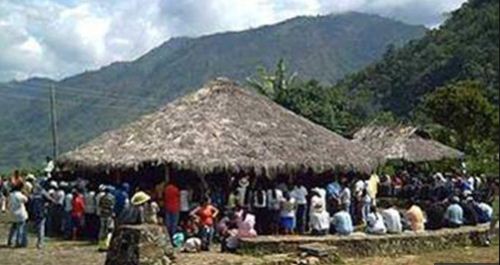
The Resguardo’s claim was accepted by the Colombian Constitutional Court, the final court of appeal for constitutional matters in Colombia. The court ordered that the Resguardo’s lands must be delimited and titled within one year, during which time all further permits or formalisation of mining activities must be suspended. Any subsequent mining activities proposed on the delimited territories may only proceed on the basis of the effective participation of the Resguardo.
The court also ordered that the map produced by the Resguardo of their land be registered provisionally until it is officially demarcated. This ruling is also relevant for other indigenous and Afro-Colombian communities whose lands are awaiting delimitation.
In what appears to be a legal first internationally, the court also gave explicit protection to ancestral mining activities carried out by some of the 32 communities within the Resguardo, stating that, although not currently recognised under State laws, this mining conformed to Resguardo laws and could therefore not be considered illegal. Importantly, the court also recognised that the State had an obligation “not to criminalise this type of ancestral activity”.
Responding to the court judgment, Héctor Jaime Vinasco, ex-Governor of the Resguardo, and the principal coordinator of mining issues for the Cabildo, said: “This is an historic judgment for the indigenous Resguardo of Cañamomo Lomaprieta. For centuries, the different leaders of the Resguardo have been defending our collective land rights and seeking to resolve the problem of land titling with the authorities; this judgment orders that the delimitation and titling of the Resguardo is resolved without further delay.
“This judgment is a great opportunity to resolve issues caused by the lack of land titling, including exercising authority over our lands, applying our laws, thinking about economic development, and opposing projects that affect our survival as indigenous people. It supports the rightful claims of the Resguardo and suspends the existing deals that are going on behind the communities’ backs through mining titles, concessions, processes of legislation and licences and makes clear that no mining activity can be carried out in the territory without our consent.”
These requests are in keeping with international human rights instruments that recognise indigenous autonomy and self-government over ancestral territories, and the resources integral to these.
“This is a landmark decision for indigenous peoples in Colombia and globally,” said Viviane Weitzner of Forest Peoples Programme. “It recognises the legitimacy of indigenous self-regulation of subsoil resources within their territories, lifting the label of criminalisation of a spiritually, culturally and economically important activity that has been conducted without the use of harmful substances for centuries. The court is calling on the State to do more to protect indigenous territorial rights, by applying international standards around demarcation and titling and ensuring future decision-making includes the Cabildo’s free, prior and informed consent (FPIC). We remain concerned however that this decision may increase the risks to Resguardo leaders, some of whom have already suffered a number of recent credible death threats. It is important that the Colombian government ensure that members of the Resguardo are protected in light of this decision, and we urge the State to do everything in its power to ensure the safety of land and human rights defenders involved in this case.”
This historic court win is a critically important first step. But now rigorous implementation of the Court orders must take place for it to achieve its potential in upholding indigenous rights. Héctor Jaime Vinasco added: “We call on our allies and supporters to join the next moment of our journey, the implementation of the Court’s orders, which we know will be the hardest part.”
Figures from 2015 showed:
- Some 29.8% of the national territory of Colombia is occupied by 768 indigenous reserves, with 30,590,599 titled hectares and 1,192,628 hectares still required.
- Some 343,303 hectares issued in mining concessions overlap with Resguardo lands.
In 2015, the Resguardo submitted a “tutela” (writ of constitutional protection) to the Administrative Court of Caldas claiming, among other things, violation of the Resguardo members’ fundamental collective rights to their territories and natural resources, to self-determination and self-governance within their territories, as well as to effective participation (including free, prior and informed consent) in relation to activities proposed within their territories. This writ was rejected at first instance and on appeal, but the Constitutional Court has overturned these decisions.
For decades the Resguardo, which was established in colonial times, has been seeking official delimitation of its territories through various administrative authorities in Colombia. In the absence of such delimitation, which was never completed, the National Mining Agency continued to grant permits and licences for gold mining without consulting with or seeking the consent of the Cabildo, the traditional authorities of the Resguardo, on the basis that the Resguardo’s territories were not registered in the official land titles register.
Gold mining is an ancestral activity of the Embera Chamí people, who have self-regulated this activity even prior to the formation of the Colombian State. The State’s permits both undermine the Resguardo regulations related to mining in their lands, and threaten the livelihoods of those who continue to carry out ancestral mining activities.
The Resguardo Cañamomo Lomaprieta comprises 32 communities (including one Afro-descendant community, some members of which are seeking separate status) and 24,068 inhabitants, according to a 2014 census. The lands currently claimed by the Resguardo total 4,836 hectares. The current territory claimed is significantly less than the original lands granted to the Resguardo in colonial times (which is in turn significantly less than the traditional territories of the Embera Chamí people).
The Embera Chamí people are an indigenous people from Western Colombia, whose traditional lands extended through the current departments of Antioquia, Caldas, Chocó, Risaralda and Valle de Cauca. Different groups within the Embera Chamí people continue to live across these departments (that is, the people is not solely located within the Resguardo Cañamomo Lomaprieta).
World Desertification Day: Campaign to invest in degraded lands underway
“Our land. Our home. Our Future,” is the rallying call for this year’s celebration of the World Day to Combat Desertification on 17 June 2017. The slogan draws global attention to the central role productive land can play in turning the growing tide of migrants abandoning unproductive land into communities and nations that are stable, secure and sustainable, into the future.
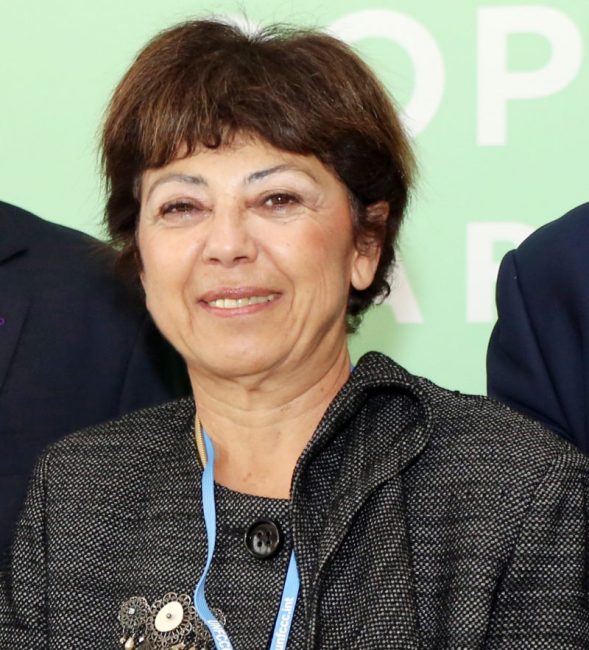
The United Nations Convention to Combat Desertification (UNCCD) has also released the campaign logo for use by any group, organisation, government or entity that will organise a celebratory event for the Day.
“Migration is high on the political agenda all over the world as some rural communities feel left behind and others flee their lands. The problem signals a growing sense of hopelessness due to the lack of choice or loss of livelihoods. And yet productive land is a timeless tool for creating wealth. This year, let us engage in a campaign to re-invest in rural lands and unleash their massive job-creating potential, from Burkina Faso, Chile and China, to Italy, Mexico, Ukraine and St. Lucia,” says Ms. Monique Barbut, the United Nations top advisor on combatting desertification and drought.
“The possibility for success today is greater than ever before. More than 100 of the 169 countries affected by desertification or drought are setting national targets to curb run-away land degradation by the year 2030. Investing in the land will create local jobs and give households and communities a fighting chance to live, which will, in turn, strengthen national security and our future prospects for sustainability,” Ms. Barbut added.
Ms. Barbut also announced that Burkina Faso, in West Africa, will host the global observance of the World Day to showcase the political commitment and proactive steps the region is taking to tackle the migration and land degradation challenges.
“Since the early 1980s, we have been rehabilitating degraded land by building on our traditional techniques such as the Zaï or adopting new techniques that work, such as farmer managed natural regeneration. We intend to be land degradation neutral by 2030. We are hosting the global observance on 17 June because we want to show the world, what we have achieved and is possible in order to inspire everyone into action,” said Mr. Batio Bassiere, Minister of Environment, Green Economy and Climate Change of Burkina Faso.
Burkina Faso hosted the 2005 Heads of State Summit for the Sahel-Saharan countries where 11 countries reached an agreement to restored degraded land on an 8000 kilometre stretch of land cutting across the Sahel. The initiative is now popularly known as the Great Green Wall for the Sahara and Sahel.
The United Nations designated 17 June as the World Day to Combat Desertification to raise public awareness about the challenges of desertification, land degradation and drought and to promote the implementation of the United Nations Convention to Combat Desertification in those countries experiencing serious drought and/or desertification, particularly in Africa.
Dublin meeting prepares ground for new IPCC report
The Intergovernmental Panel on Climate Change (IPCC) has put in motion modalities for the actualisation of a Special Report on climate change, desertification, land degradation, sustainable land management, food security, and greenhouse gas fluxes in terrestrial ecosystems. Towards this, a scoping meeting will hold in Dublin, Republic of Ireland, on 13-16 February 2017. The meeting will bring together around 100 experts from about 50 countries.

A media briefing scheduled for the morning of Monday 13 February precedes the opening ceremony session of the meeting at which Laura Burke, Director-General of the Environmental Protection Agency, and Hoesung Lee, Chair of the IPCC, will present a welcome address. Bill Callanan, Chief Inspector of the Department of Communications, Climate Action & Environment, will also speak at the opening session. This Plenary Session is also open to the media as observers, according to the IPCC.
Representatives from the IPCC taking part in the Media Briefing will include IPCC Vice-Chair Youba Sokona, who is the Chair of the Scientific Steering Committee of the Scoping Meeting and Andy Reisinger, Vice-Chair of IPCC Working Group III and Vice-Chair of the Scientific Steering Committee, and other members of the IPCC Bureau.
Sokona, Reisinger are expected to provide information about the IPCC, the Special Report and the purpose and expected outcomes of the scoping meeting.
“The way we manage land is one of the critical influences on the climate system. We need a holistic view so that responses to climate change can enhance other goals such as eradicating poverty and enhancing food security,” said IPCC Chair, Lee. “Adaptation and the mitigation of climate change go hand-in-hand when we manage land sustainably, for example by restoring degraded land or improving agricultural practices. This report provides a unique opportunity to help policymakers develop integrated responses to these challenges.”
The IPCC decided to produce the Special Report in April 2016. It is due to be completed in
September 2019. The meeting in Dublin will draft the outline and indicative coverage of the contents of the report, for consideration by the IPCC when it next meets in March.
The IPCC is the UN body for assessing the science related to climate change. It was established by the United Nations Environment Programme (UNEP) and the World Meteorological Organisation (WMO) in 1988 to provide policymakers with regular scientific assessments concerning climate change, its implications and potential future risks, as well as to put forward adaptation and mitigation strategies. It has 195 member states.

